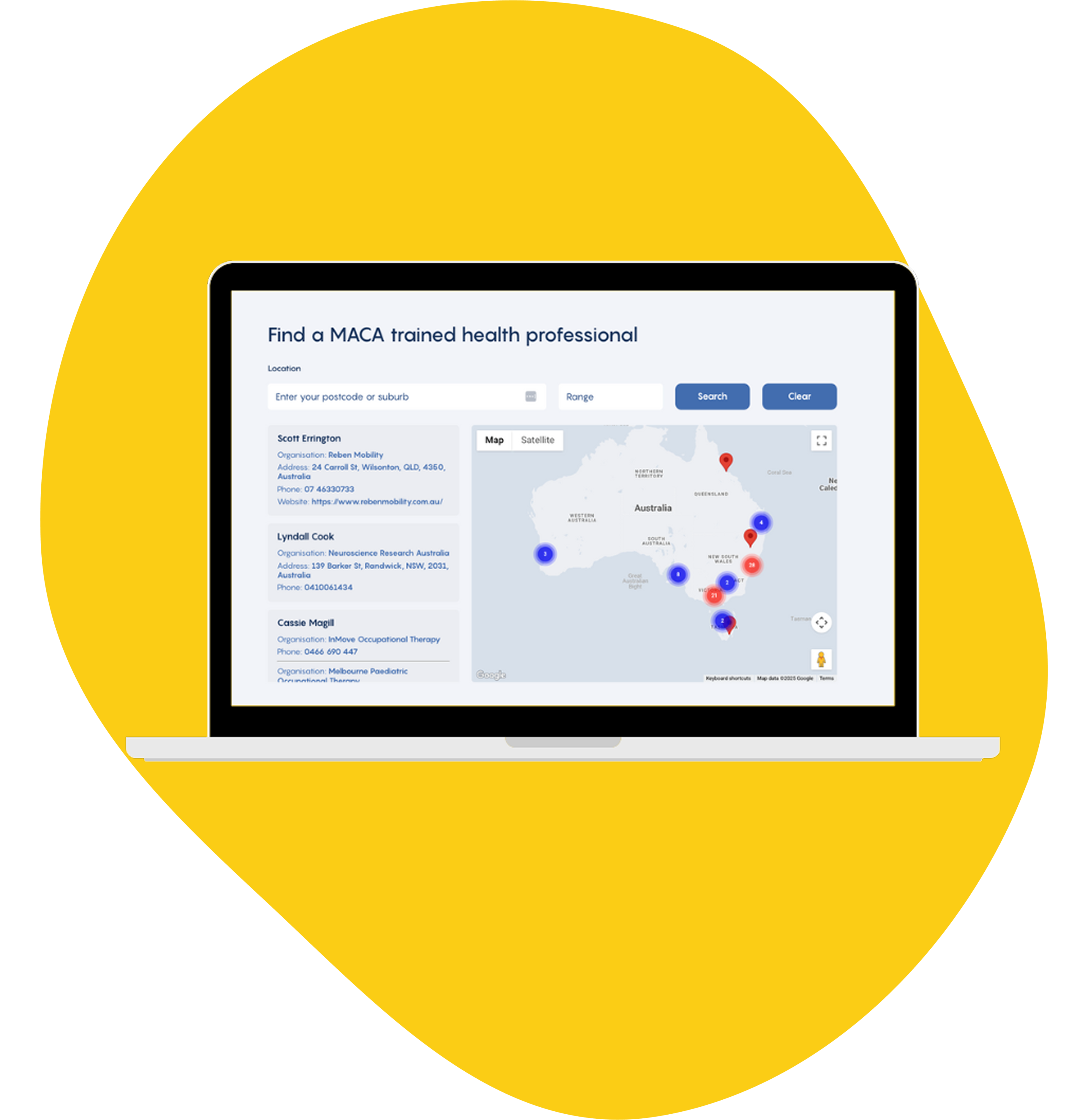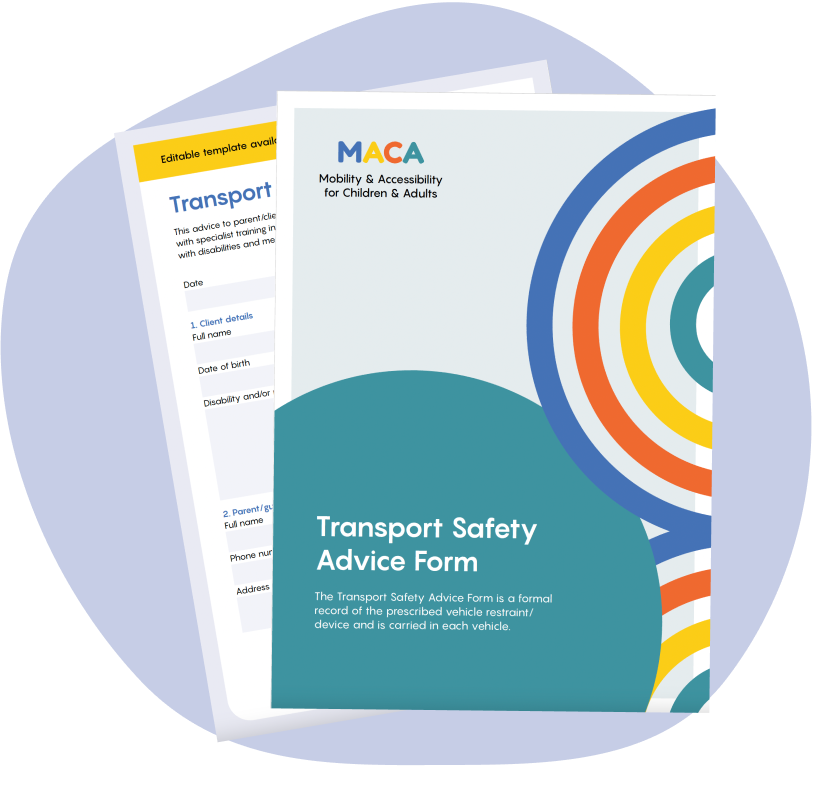Western Australia
Understanding road laws

Introduction
This page explains the main road rules in Western Australia for travelling in cars. These rules include exemptions where a person with a disability or medical condition needs an alternative restraint or method of travel.
But research shows these exemptions don’t always keep people safe. To support safer outcomes, we recommend seeking an assessment from a MACA trained allied health professional.
To improve protection for children with disabilities and medical conditions under the road rules, we successfully advocated for the current review of the Australian Child Restraint Road Rules to be inclusive of children with disabilities and medical conditions.
The National Transport Commission is now leading an inclusive review, and we are participating in the review’s Expert Advisory Group.

Western Australian road rules
The Road Traffic Code 2000 provides requirements for how people must be restrained when travelling in a motor vehicle, in the following age groups:
• Under 6 months
• 6 months to under 4 years
• 4 years to under 7 years
• 7 years to under 16 years
• 16 years and over
The rules define approved vehicle restraints, which are generally Australian standard car seats and seatbelts that comply with the Australian Design Rules. The type of vehicle restraint required will depend on the person's age and size.
Where a person with a disability or medical condition is unable to travel in an approved vehicle restraint, there are exemptions that allow the person to travel in an alternative way.

Exemptions
An exemption is required when a person is prescribed a non-approved vehicle restraint, or is unable to wear the seatbelt properly adjusted and securely fastened. Examples of alternative methods of travel include:
- special purpose car seat
- modified Australian standard car seat
- specialty harness/vest
- additional recline (which may mean the seatbelt is not being worn properly adjusted and securely fastened)
- in rare cases, no child restraint or vehicle seatbelt
There is also an exemption to allow a child aged 4 to under 7 years to travel in the front row of a vehicle, which has two or more rows, due to their disability or medical condition.
There are also vehicle standard exemption requirements for the legal use of seatbelt buckle covers.
MACA Certified Professionals can help families and clients comply with these requirements.
Children under 16 years
Western Australia has an exemption notice for transporting children and young people under 16 years with disabilities or medical conditions.
This exemption allows a driver to transport a child without meeting the standard child restraint requirements, provided the conditions of the notice are met (see below). It does not apply to devices that modify a vehicle, such as seatbelt buckle covers, or to rare cases where a child cannot travel in any type of restraint.
A prescriber under this notice may be a medical practitioner, occupational therapist, psychologist, physiotherapist, rehabilitation engineer, or biomedical engineer.
The exemption applies only in Western Australia. If you are travelling interstate, you must comply with the requirements in that state or territory.

Exemption conditions:
* The child or young person is restrained in a device prescribed by a prescriber in accordance with AS/NZS 4370:2013

Exemption conditions:
* The device is fitted in accordance with instructions in the Advice to Parent form
* The driver is carrying a current Advice to Parent form

Exemption conditions:
* The driver (of the vehicle the child or young person is travelling in) has a medical certificate certifying the child’s diagnosis as stated in the Advice to Parent form
Medical certificate requirements
A medical certificate is required if a person needs to travel in an alternative restraint, or in the rare situation where no child restraint or seatbelt can be used.
The person (or, if the person is a passenger, the driver) must carry a current medical certificate in the vehicle, signed by a medical practitioner, and be able to show it to police on request (either at the roadside or within a reasonable time afterwards).

Medical certificate requirements
The medical certificate must state that:
* the person is unable for medical reasons to travel in a seatbelt, OR
* that because of the person’s size, build or other characteristic, it would be unreasonable to require the person to travel in a seatbelt

To be considered current the medical certificate must:
* specify the date period to have effect and that period has not expired, OR
* be endorsed with the words 'permanent disability', OR
* in any other case, a period of not more than 2 years has expired from the day of its issue

Children 4 to under 7 years (front row of vehicle with two or more rows)
A driver is exempt from the rule requiring the child to travel in the rear row of a vehicle with two or more rows providing the medical certificate states that:
* the person is unable for medical reasons to sit anywhere except in the front row (for vehicles that have two or more rows of seats)

Transport safety advice for parents/clients
MACA recommends that a Transport Safety Advice Form be completed by a prescriber (e.g., occupational therapist) where a person with disability/medical condition has been assessed and prescribed an alternative method of travel.
It is recommended that this advice to parent/client form is carried in the vehicle the person travels in at all times as it provides important information about the prescribed method of travel.
This form has been developed for use by MACA Certified Professionals and is available from MACAhub Pro.
FAQs

Can't find what you're looking for?
Get in touch for help

